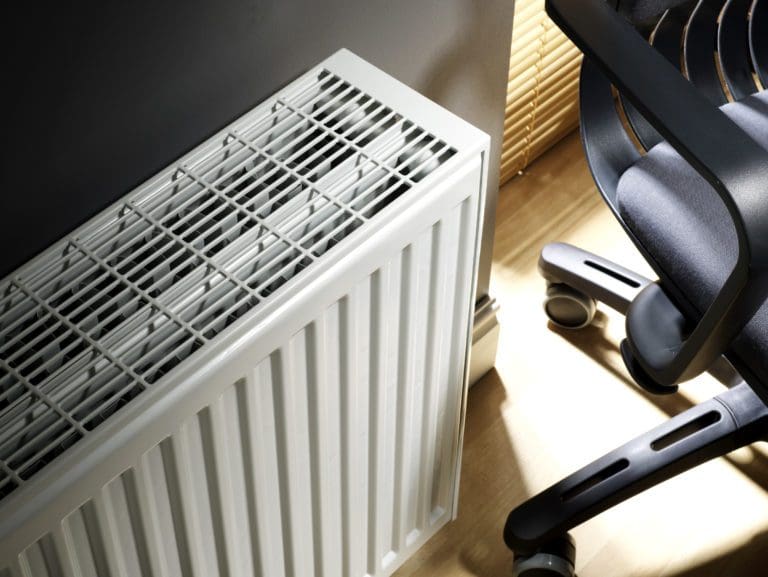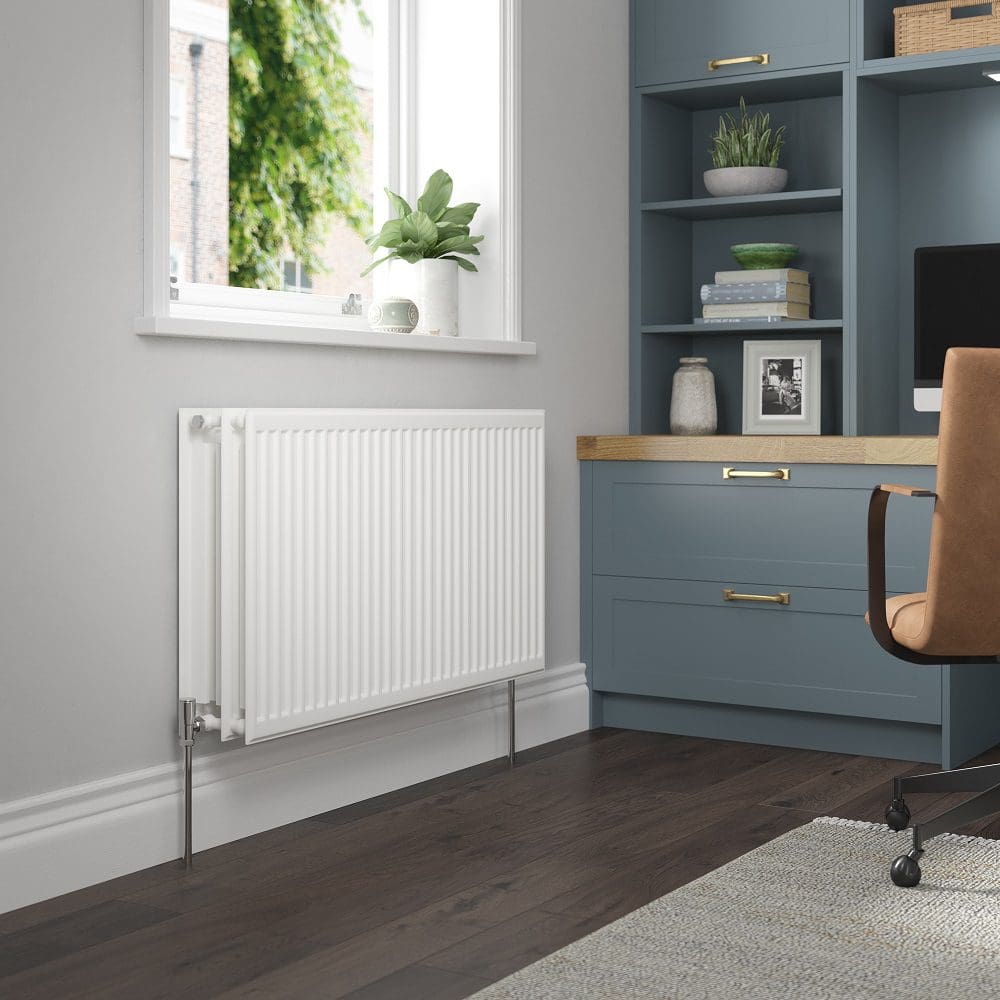
This is particularly the case with renewable heating systems where growing popularity is driving rapidly increasing installation numbers as well as increasing questions for installers.
The growth of the heat pump market is creating a need for larger and higher capacity radiators and Stelrad has responded to these needs by broadening its already massive range of sizes and shapes for its most popular radiators with a particular focus on introducing a wider range of vertical radiators. The long-established radiator specialist has also seen an enhanced demand for its K3 radiators – which have three panels and three fins – and offer, for example, 50% more heating capacity from a radiator with the same footprint as a K2 format radiator.
Fit for the future

Stelrad also continues with its ‘Fit for the Future’ campaign, highlighting that, despite what you might see and read, radiators, when paired with heat pumps, are still able to provide the levels of comfort heating and hot water required in UK homes.
A spokesperson for Stelrad talks us through the importance of this awareness campaign.
“The arrival of the low temperature heating system has brought with it some very understandable questions that installers are seeking answers to:
- Can we still use products we use now with traditional boiler driven heating systems if the heat source is a heat pump?
- Is there anything we need to consider that we take for granted in traditional installations?
“The answer is of course yes – we need to look closely at how to ensure that the heat generated is shared effectively in the new home as well as or the existing home that is having its heating system upgraded.”
Sifting out the facts
“But it’s important to sift through all the information being put about in order to get to the facts about products rather than the, sometimes, misleading myths offered by those with competitor products.
“In new build housing, using a heat pump-based solution is a relatively simple solution. The heating system can be designed into the home at the outset so you know the parameters within which the heating system must operate – the method of construction, the size of the rooms, the number, type and size of doors and windows – so the heat loss calculations can be done up front and radiators sized accordingly. The levels of insulation can be agreed at the outset that will provide the best support for any heating system chosen, whether radiators or UFH.
“The key to radiators operating well in any situation is to size them properly at the outset, which involves accurately working out heat loss calculations to achieve the necessary number of BTUs required to provide comfort heating in each room and to select a radiator that can provide that level of heating.
“Stelrad offers a free, and simple to use, radiator sizing guide and heat loss calculator along with a Renewables Advice page on its website. Facts and helpful information are also shared through a free-to-take CPD also available on its website, to anyone – not myths and misleading statements.”
Do we need to ditch radiators and find alternative solutions?
“The answer is a resounding no. Radiators will work well with heat pumps but depending on the heat loss calculations for the installation, you may need to increase the size of the radiators to provide a larger metal surface area to heat the air in the room to the level required to provide comfort heating.

“You can achieve the extra boost radiators need by replacing the existing single or double panel radiators with the relatively new K3 radiators that have three panels and three sets of fins – providing the additional metal surfaces you need but without increasing the radiator footprint on the wall.”
Support for installers
“The arrival of the updates to Building Regulations, which came into effect from 15th June 2022 in England and from November 2022 in Wales, brought with it a realisation that the key figure is 55°C – the maximum flow temperature for all new wet heating systems from this date.
“The regulations also say that heating appliances and radiators should not be oversized. TRVs need to be fitted to every radiator except where there is a room thermostat fitted. The differential between the flow and return should be 10°C – giving a 45°C return, and a mean water temperature of 50°C. This will have an impact on radiators but, put simply, means that sizing of radiators is more important than ever. On its website Stelrad is offering all the advice needed for installers and specifiers to select the right radiators for the right applications.
“Radiators are very much ‘fit for the future’ but, as has always been the case, correct sizing will need to be undertaken to ensure that they keep the home warm and cosy.
“But can radiators work well with air source heat pumps? Very definitely yes, they can – and they already are in a host of installations across the UK.”